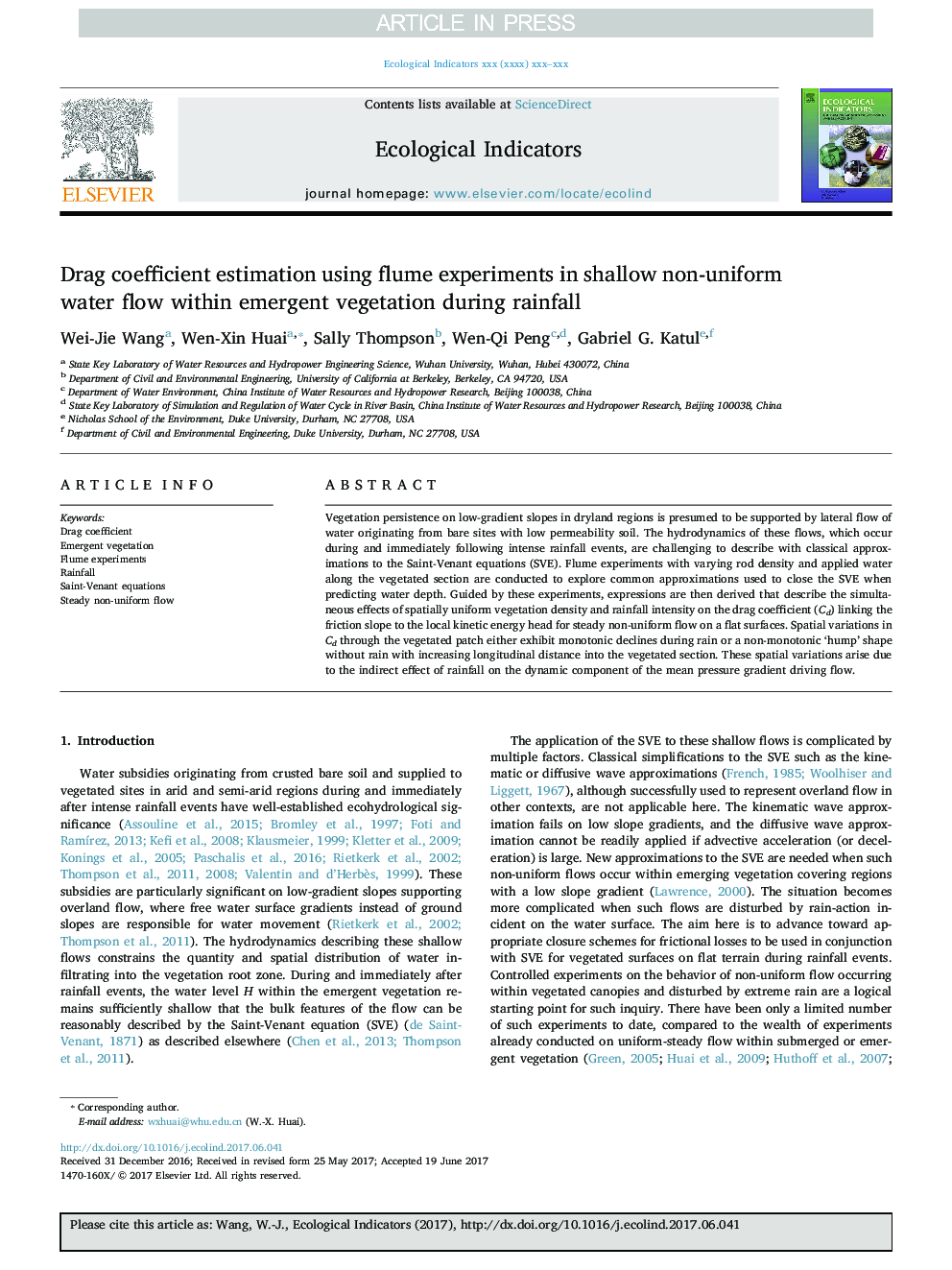| Article ID | Journal | Published Year | Pages | File Type |
|---|---|---|---|---|
| 8845283 | Ecological Indicators | 2018 | 12 Pages |
Abstract
Vegetation persistence on low-gradient slopes in dryland regions is presumed to be supported by lateral flow of water originating from bare sites with low permeability soil. The hydrodynamics of these flows, which occur during and immediately following intense rainfall events, are challenging to describe with classical approximations to the Saint-Venant equations (SVE). Flume experiments with varying rod density and applied water along the vegetated section are conducted to explore common approximations used to close the SVE when predicting water depth. Guided by these experiments, expressions are then derived that describe the simultaneous effects of spatially uniform vegetation density and rainfall intensity on the drag coefficient (Cd) linking the friction slope to the local kinetic energy head for steady non-uniform flow on a flat surfaces. Spatial variations in Cd through the vegetated patch either exhibit monotonic declines during rain or a non-monotonic 'hump' shape without rain with increasing longitudinal distance into the vegetated section. These spatial variations arise due to the indirect effect of rainfall on the dynamic component of the mean pressure gradient driving flow.
Related Topics
Life Sciences
Agricultural and Biological Sciences
Ecology, Evolution, Behavior and Systematics
Authors
Wei-Jie Wang, Wen-Xin Huai, Sally Thompson, Wen-Qi Peng, Gabriel G. Katul,
